The Art Deco period quickly followed the explosion of design from the Art Nouveau period, and became a popular style of architecture for cities in Europe and North America. This era began in the 1920’s and ended in the early 1940’s around the Second World War. Marked by a new desire for modernism, this era largely influenced the architecture in early post-industrial cities throughout the US.
The movement began in Paris as a response to Art Nouveau. Artists felt that the style from the Art Nouveau era reached a point of dated saturation, and failed to reflect a modern aesthetic. This change in mood manifested in a swift change in design style. Where the Art Nouveau style was very organic and sinewy, the Art Deco period went for more rigid and geometric forms. The architecture of this time had a verticality to it that previous eras lacked, made possible by the advent of steel.
Rather than exploring the Art Deco movement as a whole, this article will zero-in on the regional differences of architecture across the United States of America. Like many trends, the Art Deco period began in New York and traveled along the East coast until moving to the West. This cultural spread was made possible by a small traveling exhibition of French Decorative Arts in 1926, and the World’s Fairs that took place in the 1930’s.
New York City was growing rapidly at this time, with skyscrapers rising throughout the city. With so many building projects launching, it comes as no surprise that New York is home to many of the most famous Art Deco buildings.
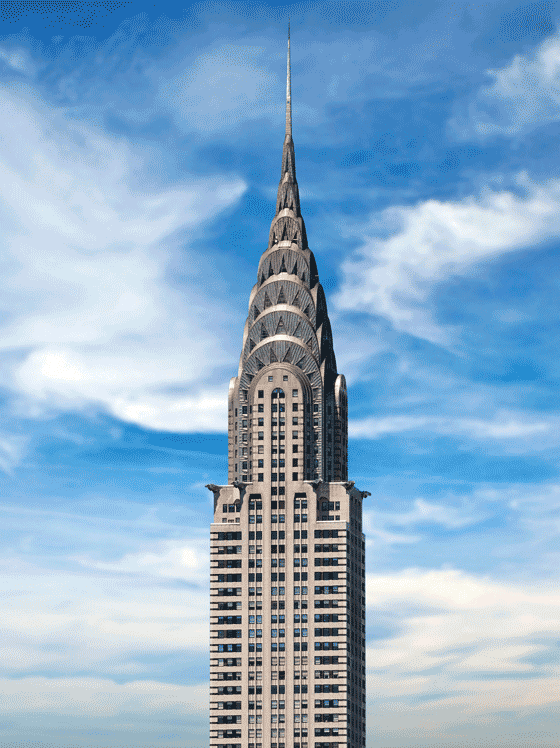
The Chrysler Building, completed in 1930, is one of the most iconic examples of Art Deco architecture. It features the streamlined shapes and terraced layers indicative of the era. The crown of the building is easily recognizable, and utilizes strong, modern geometric patterning. Stylized busts proved to be another commonly used decorative motif. The Chrysler Building sports the ever-popular American symbol, the eagle, on multiple points of the structure.
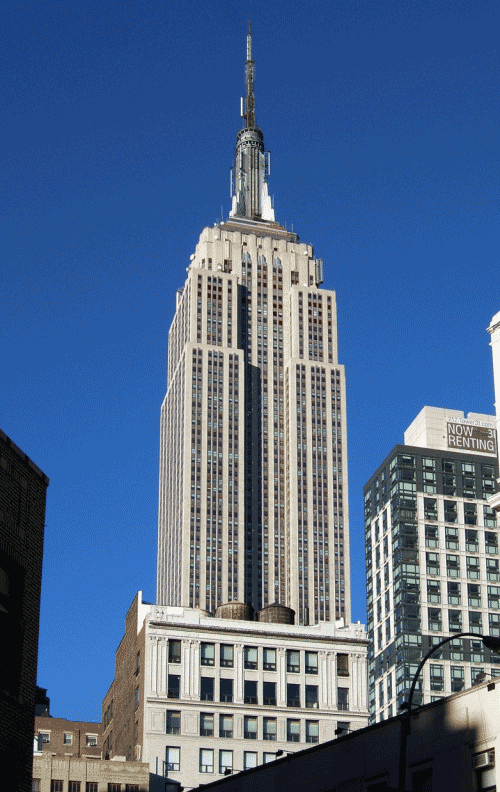
The Empire State Building finished construction just a year after the Chrysler Building, and provides a different take on the Art Deco period. While each building showcases the stair-stepped architectural style, the similarities end there. The Chrysler building was far more streamlined, with a curvaceous top, while the Empire State Building is blocky and sharp. The spire does show some of the more stylized Art Deco motifs, however, the Empire State Building is one of the more understated examples of the era.
In Chicago, the Art Deco period took on a more “squat” appearance. With fewer high-rises than NYC, monumental skyscrapers would be out of place. These buildings still have the verticality theme, with the eye being led upwards, though this was achieved frequently through a strong central line.
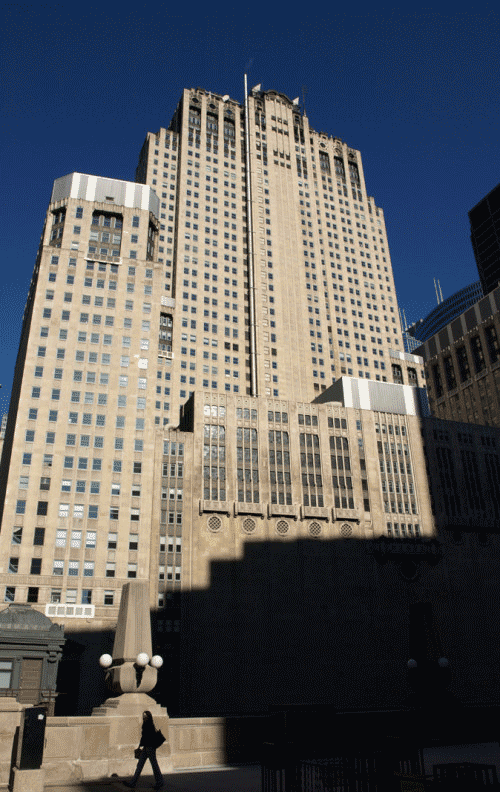
Take the Civic Opera Building for example, while much of the building is about as wide as it is tall, a central column rises up through the building adding that vertical element. Though built primarily with steel, the exterior is paneled with limestone, which matches the bulk of Chicago’s architecture. Unlike the Chrysler building and more like the Empire State Building, The Civic Opera Building is largely unadorned. The interior of the building does incorporate largely Art Deco motifs, but also some Art Nouveau influences as well.
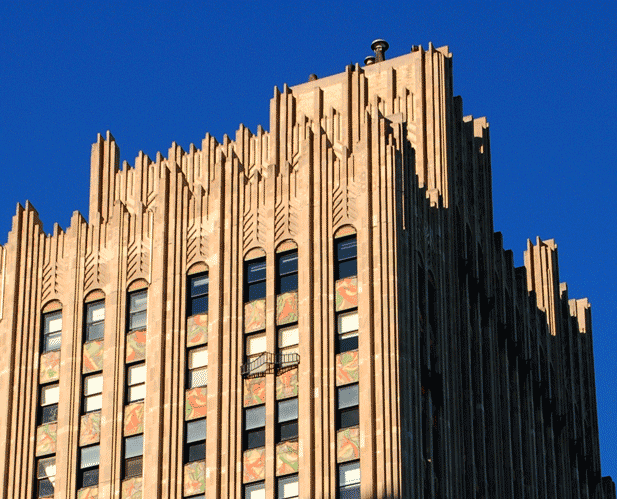
Conversely, the Powhatan Apartment building, also more wide than tall, exhibits a more obvious Art Deco aesthetic. With a granite and limestone exterior, the building still blends into the surrounding area, however, the geometric reliefs on the crown of the building gives it the Art Deco look. Again, while not as terraced as Art Deco buildings from New York City, there is still the use of strong vertical lines throughout the building.
Traveling further West to Colorado, Denver is more well known for its Victorian era and Prairie Style architecture. However, Denver, Boulder, and Colorado Springs have some examples of Art Deco architecture. None of these cities feature many, if any, skyscrapers, so most of the examples of Art Deco are smaller structures, typically municipal buildings and schools. While a few of these buildings do have a vertical element to them, most of them sport the decorative reliefs and carvings of the Art Deco period. Colorado is not known for being at the forefront of many trends, and this period of architecture is no different. Most of the buildings featuring the Art Deco style were built in the mid to late 1930’s.
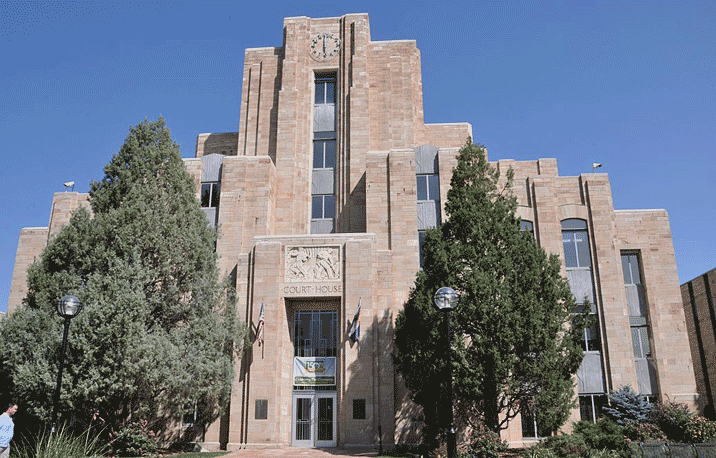
The Boulder Courthouse, completed in 1933, is perhaps one of the more Art Deco style buildings in the state. It shares the strong vertical focal point along with the blocky terraced structures on the side. Carved reliefs decorate the limestone exterior, another common trait of not just Colorado Art Deco, but Colorado architecture in general.
Colorado is also famous for the Art Deco brickwork that can be seen on various buildings around the state. By changing the angle of bricks, architects were able to mimic Art Deco styles while integrating the aesthetic of other buildings in the area.
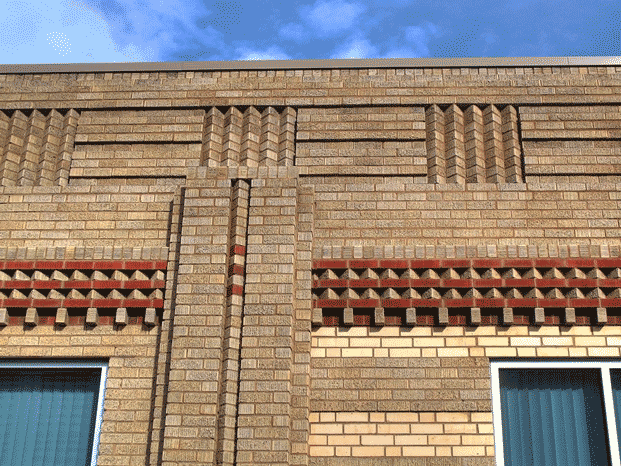
Moving further West to Los Angeles, California, Art Deco architecture persists today. As has been the case with all of the examples shown here, the architecture fits into the pre-existing aesthetic of the city. Walking along the famous Hollywood Boulevard, there are many buildings that fall into the Art Deco style. Hollywood, well known for the glamour and the entertainment industry also brought popularity to the Art Deco style.
Much like Colorado, Los Angeles has very few skyscrapers. Partially due to the area being prone to earthquakes, and that the city had room to sprawl, rather than grow upwards. Hollywood and the surrounding areas take much of their aesthetic from a mix of Mexican and Meso-American styles. One difference between Hollywood and Denver Art Deco is that while the buildings are shorter than in NYC and Chicago, Hollywood buildings do emphasize an upwards direction, and frequently feature a high middle-point or tower.
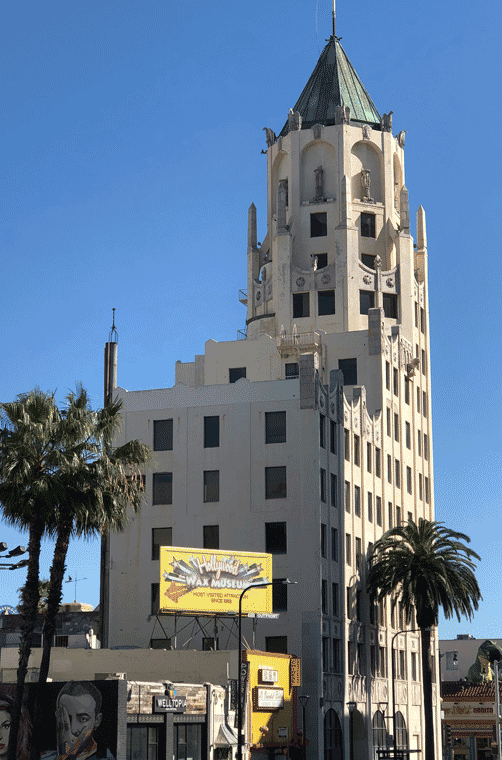
An interesting example of Art Deco architecture is the Hollywood First National Bank Building. Completed in 1928, this building features Art Deco designs on a Gothic base. Streamlined curves and geometric ornamentation adorn gothic-style arches while reliefs and Art Deco grotesques decorate the exterior.
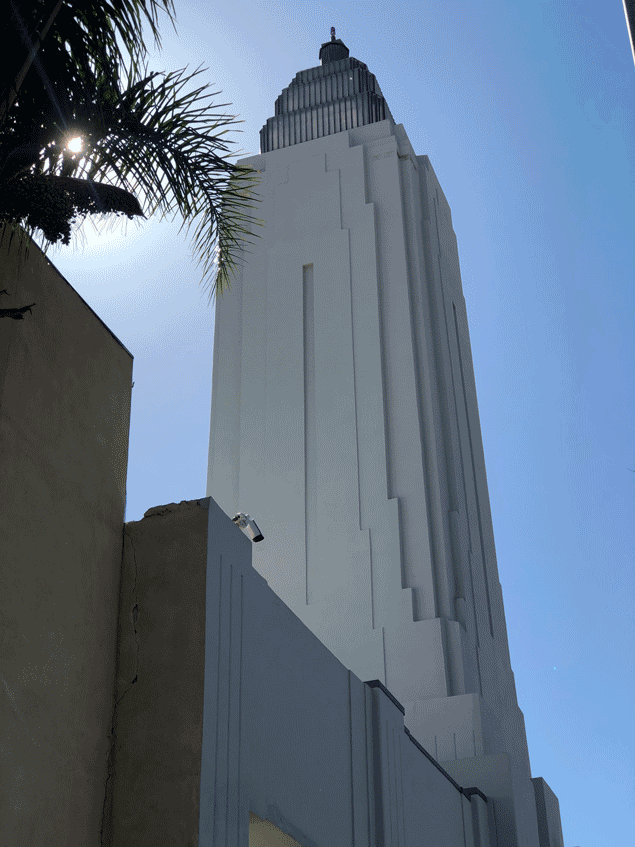
Another example of Art Deco architecture in Hollywood is the Gramercy branch of the California Bank Building built around 1929. While most of the building is only about one story tall, a central tower highlights the Art Deco style. Strong geometric lines extend to the top to show off a steel and glass crown. While the shapes are indicative of Art Deco, the white plaster exterior shows off the aesthetic of the region. The Kress Building, built in 1934 (now a popular LA nightclub) shows off a similar white exterior, but highlights an opulent side of the Art Deco period with the golden adornments lining the front of the building.
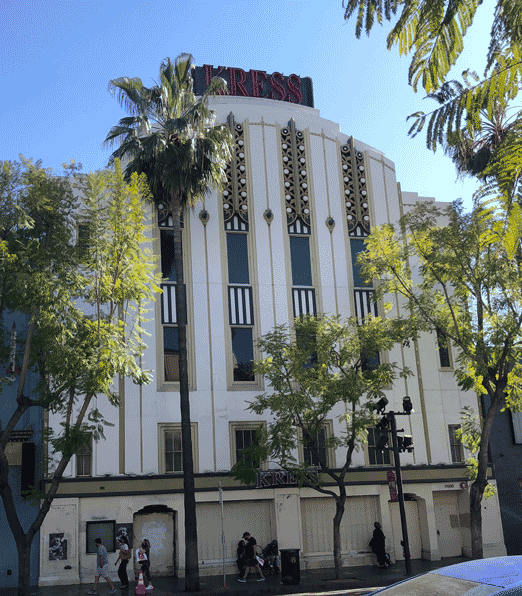
Though all of these buildings are prime examples of the many iterations of the Art Deco period, what stands out most is how each region integrated principles of Art Deco into their own architectural aesthetic. Every city used their own building styles, materials, and methods to create modern buildings that fit into the existing cityscape. In some cases. it would almost be impossible to tell when they were built unless one were to take a look at the details.
